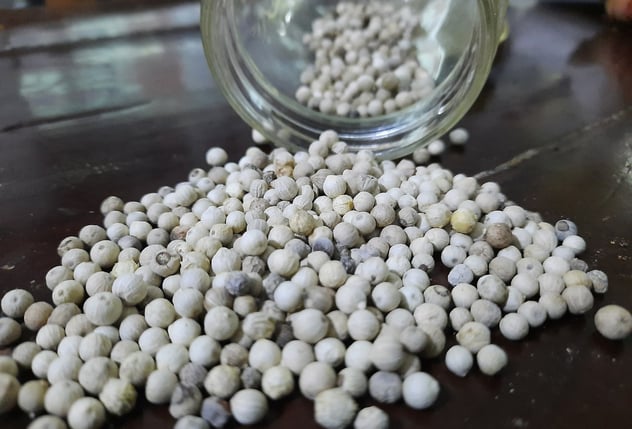White Pepper Quality: Key Evaluation Criteria
1/25/2024


White pepper is a popular spice derived from pepper berries that have been fermented, soaked, and processed to remove their outer skins. It holds a unique position in culinary practices, gaining favor for its flavor profile, which is quite distinct from black pepper. When evaluating white pepper quality, several criteria must be considered to ensure that the product meets the desired standards for flavor, aroma, and overall application. Understanding these factors is essential for both culinary professionals and home cooks alike.
Key Criteria for Evaluating White Pepper
When selecting white pepper, several critical criteria must be evaluated:
Appearance: High-quality white pepper should be light beige to pale grey. A consistent color indicates proper processing.
Aroma: The fragrance should be pungent with subtle earthy and spicy notes. A faint or stale scent suggests low quality.
Flavor: The taste of white pepper should be sharp and spicy, but not overwhelmingly hot. A well-balanced flavor is crucial for various culinary applications.
Moisture Content: High moisture levels can lead to spoilage and affect flavor potency. Low moisture levels are indicative of quality production standards.
Origin: The geographic source plays a significant role in flavor and quality. Regions known for their pepper cultivation often produce superior quality products.
Determining Factors Affecting Quality
Several determining factors can greatly influence the quality of white pepper:
Processing Methods: The methods used to process white pepper, from harvesting to fermentation and drying, significantly affect its quality. Traditional techniques often yield better flavor profiles.
Storage Conditions: Improper storage can lead to a decline in quality, making it vital to store white pepper in a cool, dry place away from direct sunlight.
Freshness: The freshness of the spice is vital. Ground white pepper is often less potent than whole peppercorns, so purchasing in smaller quantities can maintain flavor integrity.
Conclusion: Impact on Final Applications
The quality of white pepper can have a significant impact on the final dish. A high-quality white pepper enhances flavors, providing a warm spiciness that compliments various cuisines. Recognizing the criteria for evaluation and the factors influencing quality can aid in making informed selections. In culinary applications, opting for high-quality white pepper not only enhances the taste but also elevates the overall dining experience. By understanding these aspects, cooks can make better choices that align with their culinary goals.






